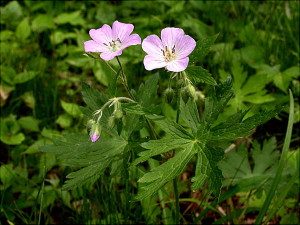Contents
Uses
- The early Native Americans used this herb to treat many medical conditions including dysentery and diarrhea. It was used as eye wash and the powdered root, often mixed with other herbs, was used as a compress on wounds and swollen feet.
Benefits
- It remedies mouth ulcers, inflamed gums and sore throat.
- The plant was later used by the European settlers in North America for diarrhea, internal bleeding, cholera and sexually transmitted diseases.
- Due to the high tannin content the herb it has both astringent and antiseptic properties and today’s herbal medicine employs the herb for irritable bowel syndrome (IBS), diarrhea (especially in children and the elderly), dysentery, gastro-intestinal catarrh, ulcers, colitis as well as hemorrhoids.
- Geranium Maculatum possesses hemostatic properties and can work as an agent to stop internal hemorrhages.
- As a mouthwash or gargle the herb can be effective against thrush, inflammation of the mouth and throat, tonsillitis and toothaches.
- The fresh leaves can also be rubbed on insect stings and used as a mosquito repellant.
- It has been found that Geranium Maculatum is very active against the bacteria that cause tuberculosis.
- Both the flowers and leaves are edible but are sour or bitter in taste. The flowers are often used as garnish.
Cautions
- Geranium Maculatum is considered a safe herb to use, but normal precautions should be taken with the herb as with all other herbs. It should not be used during pregnancy or by nursing mothers. The root contains large amounts of tannins which can be toxic to the liver if used for long periods.
Other Names
American cranesbill, spotted cranesbill, spotted geranium, alumroot, alum bloom, wild geranium, storksbill, chocolate flower, crowfoot, flekkstorkenebb (Norwegian), amerikansk storkenæb (Danish).
References
Source: Herbal Supplement Resource, http://www.herbal-supplement-resource.com/cranesbill.html

